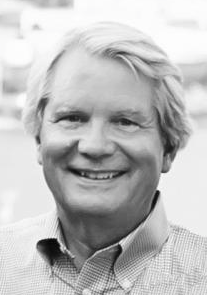
By WIN GRUENING, SENIOR CONTRIBUTOR
For those who regularly read this column, you may be familiar with my use of Charles Dickens’ references. In A Tale of Two Cities, Dickens’ most famous work, resurrection is a major theme. In a broad sense, the story foresees a resurrected social order, rising from the ashes of the old one.
While Dickens’ novel is historical fiction, the real-life mining history of Juneau and Treadwell draw interesting parallels. In our community’s version of the story, efforts now underway can help resurrect our long-forgotten gold mining fame to its former glory.

After gold was discovered around Juneau in 1880, several of the most technologically advanced mines in the world were established. These included the Treadwell complex on Douglas Island and the Alaska-Juneau mine located across the Gastineau Channel on the steep mountainside behind Juneau. Both mines, during their respective lives, became the largest low-grade gold mines in the world.
At its height, Treadwell employed over 2,000 people. Five different mills – equipped with 960 stamps – ran continuously 7 days a week. Between 1882 and 1922, over 3 million ounces of gold were extracted. After the mine tunnels caved and flooded 100 years ago, the town of Treadwell never recovered.
The Alaska-Juneau Mine opened in 1897. By its close in 1944 due to manpower shortages, it had produced over $80 million in gold – 11 times the purchase price paid to Russia for Alaska in 1867.
At current gold prices, the mines would be multi-billion dollar companies today. However, the dollar numbers don’t begin to describe how these mines shaped Juneau’s history.
The mines provided most of the employment as well as electrical power and fire protection for their respective towns. Even today, Juneau owes part of its hydroelectric power grid, its water system as well as its extensive trail system to miners who made their living here. Even our visitor industry owes its beginnings to thousands of curious tourists, traveling by steamship to Alaska, who were awed by the wonders of the Treadwell Mine.
According to Alaska-Juneau Mine records, nearly three million tons of AJ rock were used in projects around town. Due to its extreme hardness, along with its non-absorption and compaction qualities, the rock made excellent construction fill.
At the time of settlement of Juneau and Treadwell, Gastineau Channel was characterized by long tidal flats and meandering creek deltas. A very significant impact was how mine tailings were used to augment Juneau’s shore lines, adding acreage and prime real estate.
Before the mines were established, the Juneau shoreline ran along what is now South Franklin Street and Front Street. High tide rose to where the State Office Building now sits along Willoughby Avenue and then further along Glacier Avenue past the high school.
Alaska-Juneau waste rock was placed between the high and low tide line along two miles of Juneau shoreline. Across the channel, Treadwell fine tailings placed on tidelands formed “Sandy Beach” in Douglas where generations of future Juneauites would picnic and play.
By some reports, there were two good reasons for filling in the tide flats. The initial incentive was related to bad smell. Without modern infrastructure, that’s where waste and sewage ended up. Burying them under tons of tailings helped cure that problem.
More importantly, Juneau needed room to expand. Filled tidelands presented opportunities for additional commercial and residential development. Under prior agreements, the fill was provided free of charge. It also was used in construction of modernized streets, the Douglas Bridge, Juneau’s “Rock Dump” industrial area and our airport.
Many facilities in Juneau, including City Hall, Centennial Hall, the Federal Building, and JD High School are built on mine tailings. Approximately one-third of modern Juneau is built on fill from the AJ Mine.
Interestingly, largely due to the unique characteristics of the mined rock, there have been no negative environmental consequences associated with either the AJ or the Treadwell mines.
Today, both mine sites are historical outdoor museums. Underground tours of the AJ workings are available to summer visitors. The Treadwell, maintained as a historic site, contains many artifacts and a few building structures that are being preserved. Interpretative signs and walking tours are provided by the Treadwell Historic Preservation and Restoration Society.
While providing a valuable glimpse into Juneau’s past, these sites may be a herald of our future. The gold is still there and resumption of mining in Juneau is possible.
Our assembly recently voted to appoint a committee to review the current CBJ mining ordinance. Their goal is to standardize and streamline the ordinance to more closely follow the permitting process followed by the Greens Creek Mine and Kensington Mine – two highly successful mines that have significantly added to Juneau’s economic stability.
Mining was once Juneau’s most important industry, it could be again.
Win Gruening retired as the senior vice president in charge of business banking for Key Bank in 2012. He was born and raised in Juneau and graduated from the U.S. Air Force Academy in 1970. He is active in community affairs as a 30-plus year member of Juneau Downtown Rotary Club and has been involved in various local and statewide organizations.